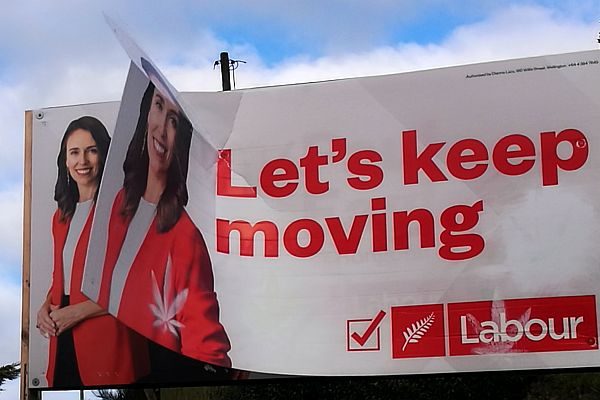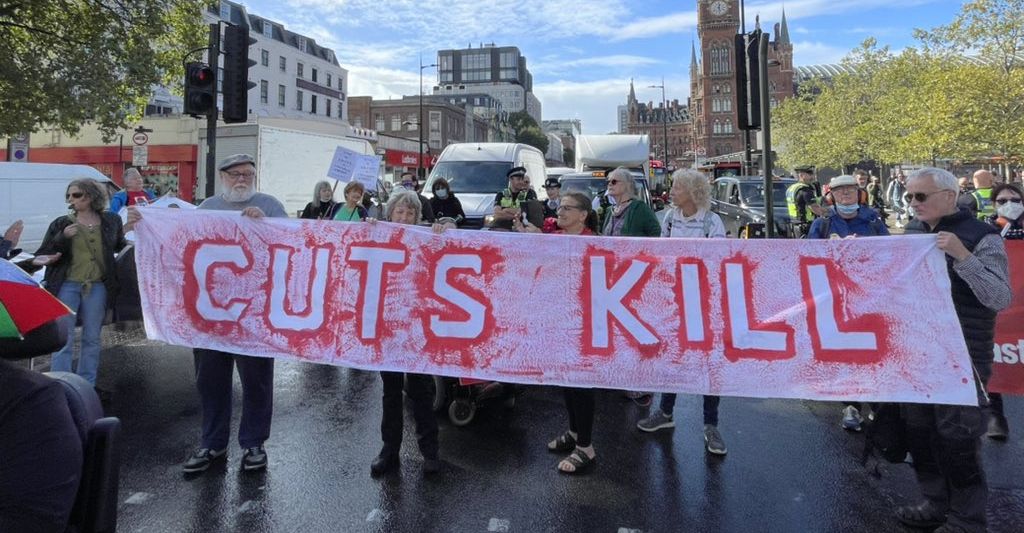To sign Jacinda Ardern’s name in New Zealand Sign Language, you run your index and thumb across a beaming smile. It is the smile that defines her and that has been ubiquitous over the weeks – which the second Auckland lockdown stretched into months – of a seemingly interminable yet largely uneventful election campaign. It was the smile with which, on Saturday night, Ardern greeted the news of her triumphal re-election.
Not long ago, the portraits of John Key that lined the nation’s highways during election season in an almost totalitarian display of dominance served the same metonymic function, standing for an entire political project. Usually, when we say that a politician has immense charisma, it is taken to imply that they have no substance, which wasn’t true of Key just as it isn’t true of Ardern. You don’t occupy the centre of politics just by flashing a smile. You occupy it by articulating a set of values in which the social bloc that determines the outcome of elections wants to see itself reflected. Sometimes we call this bloc the ‘swing vote’, which isn’t remotely as fun as it sounds, as well as inaccurate: for those ideas need to appeal to a very large group of people, overlapping with the traditional social base of either major party, and not just a fickle few. When it comes to the contested middle, these are voters who need to be persuaded that their interests will be served – usually, promising not to tax personal housing investments does the trick – but also that you have the interest of the entire polity at heart, and not just those of their class.
Which is why, even though they may both have been aiming to control the same centre, Jacinda Ardern’s overt values aren’t the same as John Key’s. His project ran on business efficiency, personal ambition and financial success. Hers runs on kindness, compassion and social cohesion. John Key wanted to build roads. Jacinda Ardern wants to rebuild hospitals. Which helps explain Ardern’s extraordinary success in dealing with COVID: it was a crisis that played to her core political strengths. You might not find great differences in the way that Australia and New Zealand tackled the pandemic – nor, up to the second outbreak in Victoria, in the respective outcomes. But the clarity with which Ardern was able to communicate each stage of the response was uniquely hers. Hence the widely reported phenomenon of ordinary people on the campaign trail thanking her for their safety and health, as if Ardern alone stood for the many institutions, officials and workers responsible for delivering the COVID response, as well as for the care that we have all been called upon to extend to one another.
This was the one moment when Labour took it too far, on the day of the Auckland campaign launch, when they turned the leader’s image into that of a religious icon. It was fleeting, but it came to symbolise the paradox of the campaign: for just as Labour started enjoying an insurmountable advantage in the polls and the conservative opposition went through not one but two changes of leader – only to settle for the least electable one – the party and Ardern chose to let circumstances and, yes, the leader’s almost transcendental popularity carry them to victory. They campaigned on virtually nothing – the slogan ‘Let’s keep moving’, roughly translates as ‘well, we’re still alive, aren’t we?’ – reserving their strongest commitment to ruling out the wealth tax proposed by the Greens, and won everything: a majority of seats, almost unthinkable in a proportional system. But it’s a strangely hollow victory.
Ardern has a mandate, but a mandate for what exactly is unclear. Labour could govern alone, although they may decide not to. If they do, the Greens, whose policies take Ardernism to its logical conclusions, will likely shadow them like the ghost of Banquo. If they don’t, we may see some progress, but of the kind that was never campaigned for and won and is therefore done to the people, as opposed to with the people. Over all of that, looms the shadow of what could be a lasting global depression. It seems unlikely that Labour would use it as an opportunity to reconfigure the country’s political economy and fulfil the promise of transformation that defined its previous campaign, but we can at least hope for something more benign than the scorched-earth, austerity approach that would undoubtedly have been taken by National. There are times when the nuances of centrism matter more than others, and that the electorate chose to side with Ardern’s set of values rather than the alternative is an uncomplicated good.
The most concrete hope for change, now as when Ardern was first elected, rests with Māori representation and Māori politics more broadly, including the ongoing occupation of land near Auckland airport – a place newly symbolic of an economic order made suddenly obsolete. While it is no longer the case, as it was in 2017, that the government owes its very existence to Māori voters, the debt is still outstanding. The previously unseated Māori Party, the Greens and Labour itself have deep connections with Māori leaders and communities, and it is in these communities that the effects of social policy will most directly be measured. That is the literal ground on which the fears that Ardern’s politics is an illusion, or the product of an image, will ultimately be tested.







